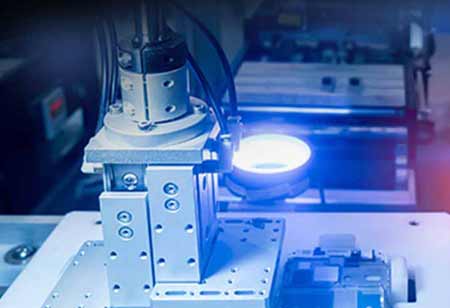THANK YOU FOR SUBSCRIBING

Technology in the Fight Against COVID-19
Joy Abraham, Vice President of IT for Life Care Centers of America

 Joy Abraham, Vice President of IT for Life Care Centers of America
Joy Abraham, Vice President of IT for Life Care Centers of America COVID-19caught every nation by surprise by the speed of its spread. However, the availability of advanced information technology in this age has provided health systems with tools that have not only helped during this time but provided valuable insights into how we could prepare for outbreaks in the future. Technology has proven to be an enabler and a way to connect patients and providers.
Infection Detection and Response – As with other outbreaks, controlling the spread of COVID-19 depends on detecting and containing the infection, as well as preventing community transmission. Many free, web-based tools help with COVID-19 screening and provideeducation and guidance on resources.Many types of touchless temperature measurement devices are available today at entrances to workplaces and public buildings. Some of these devices can do more than just record temperature – they can also alert appropriate personnel and, if necessary, control access to the facility. For places like airports that experience mass movement of people, high-performance infrared thermal cameras have been used to detect people with elevated temperatures. The data from temperature checks can be tracked and used to identify infection hot spots and clusters.Through contact tracing, mobile phones are being used to identify who’s been whereand provide early warning to those who might have been in proximity to someone with COVID-19. In some countries, data like pulse and sleep patterns gathered from wearable devices are being used to screen for illness. Tools such as migration maps, based on real-time data from mobile phones and social media, have been used to develop machine learning models that forecast the transmission patterns of COVID-19. Predictive Analytics, a form of AI used to predict future outcomes, combines public health, medical data and advanced data analytics to track and mitigateoutbreaks.
Disease Management–Artificial intelligence-based applications can perform many tasks, such as scan images to identify potential cancers and analyze data from pathology, lab tests,etc. to help facilitate diagnosis and decision making. A hospital in China is using AI to screen CT scans of lungs to help physicians prioritize cases for further COVID-19 testing. Big Data and AI have improved preparedness by tracking infection spread, patient volume, PPEsupplies, staffing levels, ventilator usage and more. AI and machine learning are helping to expedite vaccine development by combing through information rapidly as well as predicting which public health measures would be most effective. In some countries, robots perform medical tasks such as taking temperatures, delivering medications and meals, disinfecting facilities, and disposing of waste. AI has also been used to develop dashboards that collate real-time public health data, including confirmed cases, deaths and testing figures, to keep the public informed and help policymakers make decisions regarding effective interventions. Drones have been used to distributePPE and medical equipment to frontline healthcare workers.Many products like face shields, masks, ventilator components, etc. have been produced using 3-D printing.
Virtual Care–While use of telemedicine has been growing for years, COVID-19 has dramatically accelerated its use.One of the first steps that physician practices and hospitals took was to move appointments to virtual care. The ready availability of smartphones and tablets and the devices’ ease of use have facilitated this trend. Video conferencing and digital monitoring are being used to deliver care to people as a means of reducing their exposure to COVID-19. In-person physician visits have dropped dramatically, coinciding with a massive increase in telehealth appointments. The Department of Health and Human Services reported that within months, almost 44% of Medicare primary care visits were being provided by telehealth,compared to 1% before. Remote patient monitoring technologies that trackand transmit a patient’s vital signs using wearable devicesallow clinicians to make informed decisions on patient careand curb readmissions to hospitals.
Communication–Public education and cooperation are big factors in effective intervention, so a communication strategy is of the utmost importance. With about 4 billion people on the internet and 5.2 billion mobile phone subscribers, digital platforms are an unmatched tool for targeted communications. Most federal, state and local government websites now carry information on COVID-19, and many countries are using text messaging to access people who do not have internet. Chat-bots driven by AIto simulate natural human conversationare helping consumers navigate their way to the best care options based on their symptoms and care for lower-acuity conditions. Digital communication platforms are also helping to reduce the spread. Video conferencing and collaboration platforms like Zoom and Microsoft Teams are allowing adults to work from home and students to take classes online. During the pandemic, patient visitation in settings like hospitals and nursing homes has been at times severely restricted.In such settings, video conferencing plays a very important role in keeping patients connected to their loved onesand also for the hospital and nursing homes to provide updates to the families.
Many individuals and businesses have experienced technology in a new way during this pandemic, and as the situation evolves, so, too, does the use of technology. This innovation is helping people around the world as we deal with thechallenges of COVID-19.
Read Also




















ON THE DECK